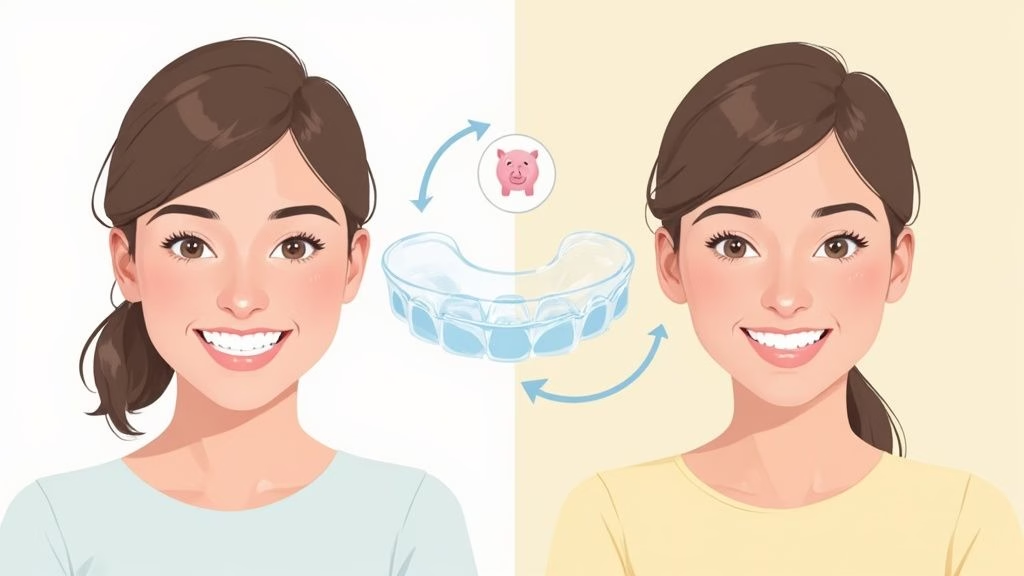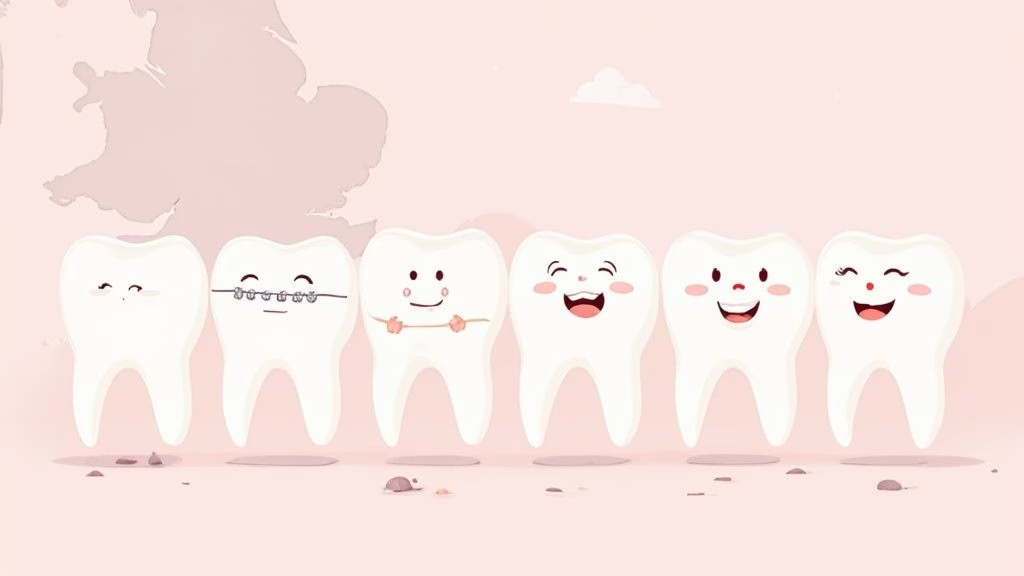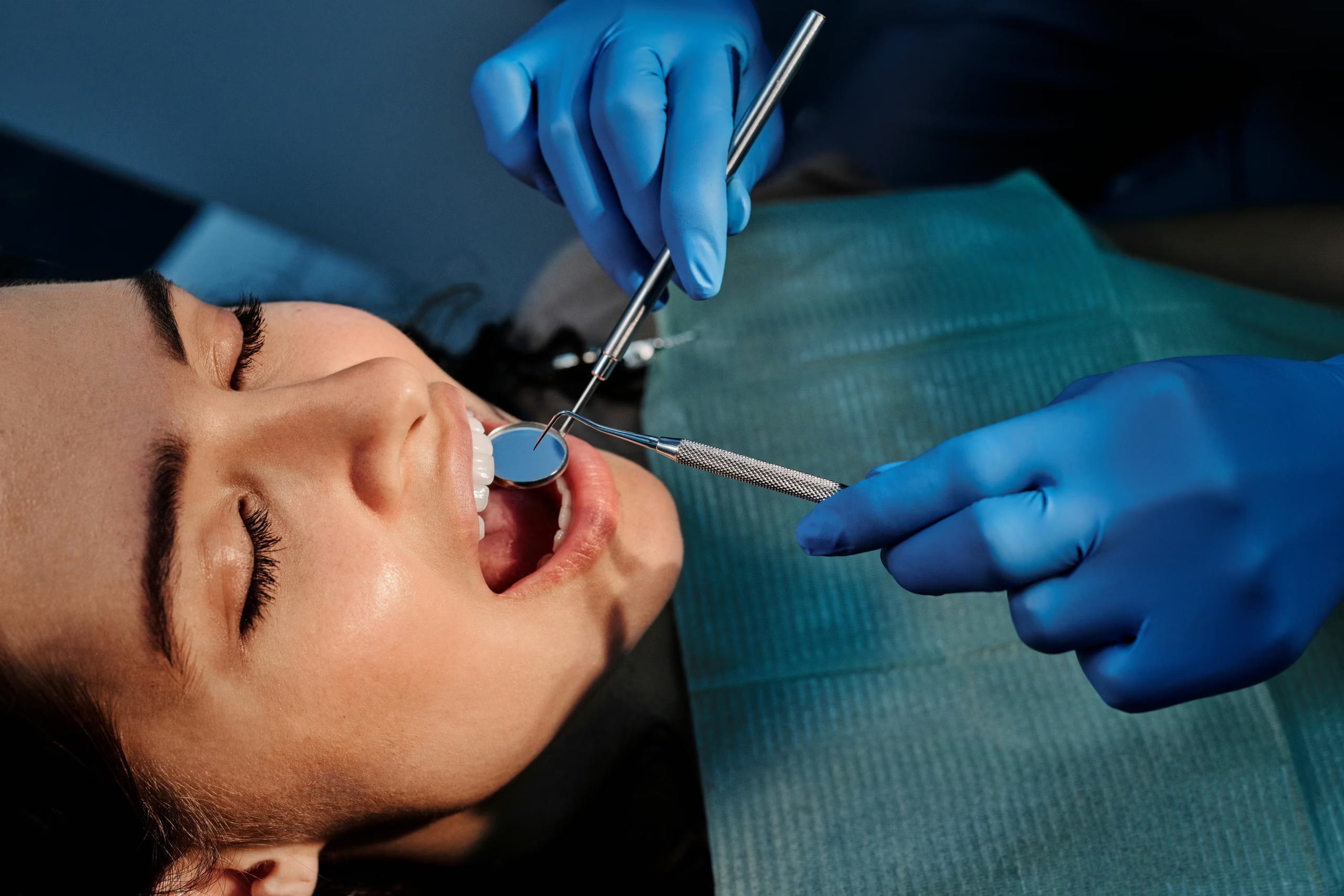Carbamide Peroxide White Teeth Whitening: Expert Guide to Professional-Grade Results
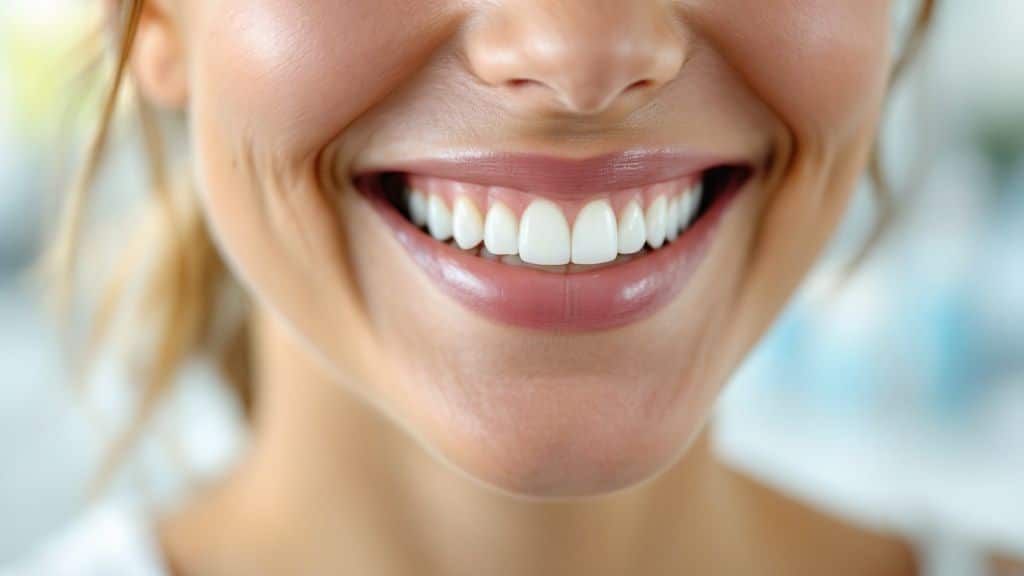
Understanding the Science Behind Carbamide Peroxide
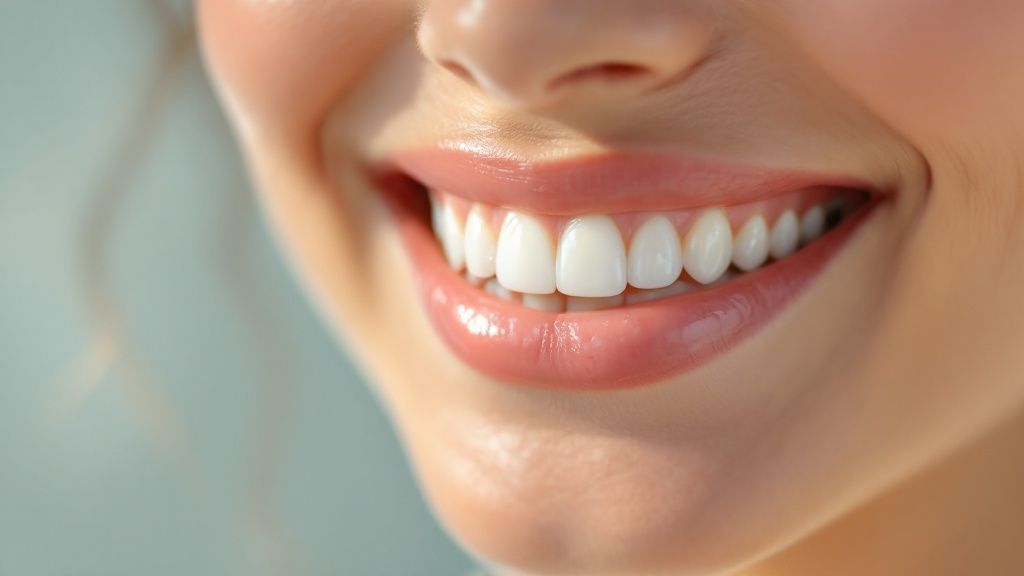
Carbamide peroxide is a powerful ingredient found in many teeth whitening products. This compound works by breaking down into hydrogen peroxide, which is the active component that actually whitens your teeth. Think of carbamide peroxide as a carrier system that delivers the whitening agent where it needs to go.
The Whitening Process: A Chemical Deep Dive
When applied to teeth, carbamide peroxide splits into two parts: hydrogen peroxide and urea. The hydrogen peroxide then seeps into your tooth enamel and dentin layers. Inside your teeth, it targets chromogens – the molecules that cause staining and discoloration.
The process is similar to breaking down a large stain into tiny pieces. The hydrogen peroxide molecules split the chromogens into smaller components that are less visible, resulting in whiter teeth.
Concentration and Timing: Key Factors for Success
The amount of carbamide peroxide in a product directly affects how quickly and effectively it works. While higher concentrations can speed up whitening, they may also increase tooth sensitivity. A 2006 research study showed impressive results – all carbamide peroxide treatments achieved at least 12 shade guide unit (SGU) improvements within 14 days. The strongest concentration tested, 30% CP, reached peak whitening of 13 SGU in just 5 days. For more details, see this clinical research study.
Why Carbamide Peroxide Stands Out
One key advantage of carbamide peroxide is its slow, steady release of hydrogen peroxide. This measured approach allows the whitening agent to stay in contact with teeth longer, making the treatment more effective. That’s why it’s widely used in both professional dental offices and home whitening kits. Understanding how carbamide peroxide works helps people choose the right whitening treatment and get the best results for a brighter smile.
Navigating Safe and Effective Concentrations
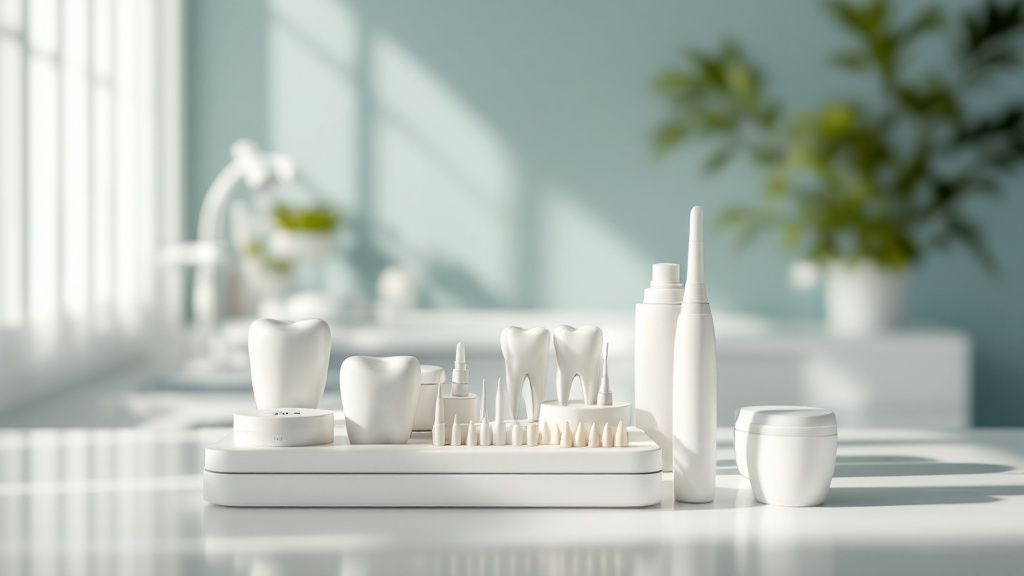
Getting the right concentration of carbamide peroxide for teeth whitening is essential for both safety and results. It’s not as simple as choosing the highest percentage available – finding the optimal level requires carefully weighing effectiveness against potential side effects.
Understanding Concentration Levels
Most teeth whitening products contain between 10% and 44% carbamide peroxide. You’ll typically find lower concentrations around 10% in over-the-counter products, which work well for maintaining already whitened teeth or addressing mild stains. Professional dental treatments use higher concentrations above 20%, but these require careful application due to their strength.
Why Higher Isn’t Always Better
While it may seem logical that stronger concentrations would give faster results, this isn’t always true. Higher percentages of carbamide peroxide often cause increased tooth sensitivity, especially in people who already have sensitive teeth or thin enamel. This happens because the hydrogen peroxide released can irritate the tooth nerves. Strong concentrations may also harm gum tissue if not applied properly.
Finding the Right Concentration for You
Your ideal concentration depends on factors like staining severity, tooth sensitivity, and desired outcome. Someone with deep stains might need a higher concentration under professional supervision. However, if you have sensitive teeth and minor staining, starting with 16% carbamide peroxide often works best. Research supports this – a 2013 study found that while 35% concentration whitened more effectively, 16% still produced good results with fewer side effects. Learn more at Smile White’s guide to 16% carbamide peroxide.
The Role of Dental Professionals
Dentists play a key part in determining the right carbamide peroxide concentration for each patient. They evaluate existing dental work, oral health status, and whitening goals to create an effective treatment plan. This careful assessment helps achieve the best whitening results while keeping risks low and setting realistic expectations for the outcome.
Protecting Your Smile: Essential Safety Protocols
Safe teeth whitening with carbamide peroxide requires careful attention to proper protocols. Dental professionals focus on achieving effective results while minimizing risks. The main concerns to address are tooth sensitivity, gum irritation, and potential enamel damage.
Understanding Sensitivity and Protection
Many people experience tooth sensitivity during whitening treatments. Here are key ways to reduce discomfort:
- Start with lower concentrations of carbamide peroxide
- Use desensitizing products before and after treatment
- Take breaks between sessions to let teeth recover
These steps are particularly important for those with sensitive teeth.
Safeguarding Gum Tissue
Protecting your gums during whitening is essential. Follow these expert recommendations:
- Choose custom-fitted trays that keep gel away from gums
- Apply protective barriers like petroleum jelly along the gum line
- Carefully control gel application to prevent overflow
These methods help minimize gum exposure and irritation.
Maintaining Enamel Health
Research shows whitening can affect tooth enamel. A 2021 University of Toronto study found that even 10% carbamide peroxide reduced enamel protein content by 50%. Higher 35% concentrations may harm dental cells. Key safety steps include:
- Beginning with mild concentrations to monitor tooth response
- Getting professional enamel assessments from your dentist
- Limiting contact time with strong whitening gels
For complete study details, view the University of Toronto research findings.
Professional Monitoring and Adjustments
Dentists play a vital role in safe whitening by:
- Evaluating if treatment is right for each patient
- Tracking results and modifying approaches as needed
- Watching for issues like ongoing sensitivity or gum problems
Having professional oversight helps reduce risks while achieving the best whitening results possible.
Professional vs. Over-the-Counter Solutions
When choosing carbamide peroxide teeth whitening, you have two main options: professional dental treatments or over-the-counter (OTC) products. Each approach has distinct differences in concentration levels, application methods, and costs that are important to understand before making your choice.
Professional Whitening: The Gold Standard
Dental professionals offer carbamide peroxide treatments with concentrations between 20% and 44%. These higher concentrations deliver noticeable results much faster than OTC options. Dentists use custom-fitted trays and professional equipment to protect your gums while maximizing whitening effectiveness. The personalized approach helps prevent sensitivity and ensures safe application.
Over-the-Counter Options: A Closer Look
While more affordable upfront, OTC products like strips, gels and toothpaste have significant limitations. UK regulations cap OTC carbamide peroxide at 0.3% – far lower than professional options. This means minimal whitening power compared to professional treatments using 20% or higher concentrations. Check out more details about OTC product effectiveness here.
Comparing Costs and Benefits
The lower cost of OTC products can be deceiving. Their weak concentrations often require months of use for minimal results, potentially costing more long-term than a single professional treatment. Through controlled application and quality ingredients, professional options also reduce risks like tooth sensitivity and gum irritation.
| Feature | Professional Whitening | Over-the-Counter Whitening |
|---|---|---|
| Carbamide Peroxide Concentration | 20% – 44% | Up to 0.3% |
| Application | Custom trays, professional application | Strips, generic trays, self-application |
| Cost | Higher initial cost, potentially lower overall | Lower initial cost, potentially higher overall |
| Effectiveness | Significantly higher | Limited |
| Safety | Higher, due to professional supervision | Lower, potential for misuse |
Making the Right Choice for Your Smile
Your ideal whitening method depends on your goals and budget. For quick, dramatic results with minimal risk, professional treatments are the clear winner. While OTC products cost less initially, their limited strength makes them less practical for achieving significant whitening. Speaking with a dentist can help determine the best approach for your specific needs.
Mastering Application Techniques for Optimal Results
Getting the best results from carbamide peroxide teeth whitening requires both selecting the right product and using proper application methods. Careful and precise application helps ensure even whitening while minimizing sensitivity and gum irritation. Here’s how to achieve professional-quality results safely at home.
Step-by-Step Application Guide for Carbamide Peroxide Gel
Follow these key steps for best results with carbamide peroxide whitening:
- Clean Thoroughly: Brush and floss well to remove plaque and debris, allowing direct contact between the gel and tooth surface.
- Check Your Tray: If using a whitening tray, ensure it’s clean and dry. Custom-fitted trays from dentists provide optimal coverage and prevent gel leakage.
- Apply Product: For trays, use a small pea-sized amount of gel per tooth section. Avoid overfilling. For strips, carefully peel and place adhesive side on teeth.
- Position Correctly: Put tray in place with a gentle press for proper fit. When using strips, smooth them onto teeth while keeping away from gums.
- Monitor Duration: Follow package instructions for wear time, typically 30 minutes to several hours based on peroxide strength.
- Clean Up: Remove tray/strips after recommended time. Rinse mouth well with water.
- Maintain Equipment: Wash trays with cool water and store in a clean, dry container.
Timing and Distribution: Professional Tips
For sensitive teeth, start with shorter treatments using lower peroxide concentrations. This lets teeth adjust gradually to the whitening process.
Make sure the gel contacts all tooth surfaces evenly while avoiding the gum line. Professional services like Toothfairy offer custom trays that improve accuracy and protect sensitive areas.
Addressing Common Application Mistakes
Several application errors can reduce effectiveness and increase discomfort. Using too much gel, letting product touch gums, and inconsistent use often lead to uneven results and sensitivity. Another mistake is not cleaning teeth properly first, which blocks the whitening agent from working effectively.
Following the techniques outlined above and consulting dental professionals when needed helps maximize benefits while minimizing risks. This approach lets you safely achieve whiter, brighter teeth with lasting results.
Creating Your Long-Term Whitening Success Plan
Getting whiter teeth with carbamide peroxide is a great first step – but keeping them bright takes an ongoing commitment. A well-planned maintenance strategy helps preserve your results while fitting your lifestyle and preventing re-staining over time.
Building a Sustainable Whitening Routine
Just like maintaining good health, keeping your teeth white requires consistent daily habits. The foundation is thorough brushing and flossing to remove surface stains before they set in. Adding a whitening toothpaste between treatments can help maintain brightness. These simple but essential practices create lasting results when done regularly.
The Power of Touch-Up Treatments
Some re-staining will naturally occur even with good care. This is where maintenance treatments come in – brief touch-ups with a lower-strength carbamide peroxide gel used periodically, like once a month, can maintain your shade. Taking this proactive approach prevents stains from becoming stubborn and keeps your smile consistently bright.
Dietary Adjustments and Protective Measures
Common items like coffee, red wine and berries are known to cause staining. While you don’t need to completely avoid them, being mindful about consumption and rinsing afterward makes a big difference. Using a straw for staining drinks provides extra protection. With some simple habits, you can still enjoy your favorites while protecting your whiter smile.
Tracking and Adapting Your Plan
Your whitening needs may change over time, so monitor your results. Keep notes on shade changes, any sensitivity, and lifestyle factors affecting staining. This helps identify what’s working and when to adjust. For example, new medications might require more frequent touch-ups. Being flexible with your approach ensures lasting success.
Ready to maintain your sparkling white smile? Toothfairy offers professional-grade carbamide peroxide whitening solutions along with expert guidance to help you create a personalized long-term success plan. Visit today to discover how you can achieve and maintain the smile of your dreams.
Last updated on February 14, 2025

Toothfairy Care Team
Toothfairy, is the world's smartest dental app, that connects patients to a dentist for a range of issues, from emergencies, cosmetics, prescriptions to virtual exams.
Toothfairy Care Team
Toothfairy, is the world's smartest dental app, that connects patients to a dentist for a range of issues, from emergencies, cosmetics, prescriptions to virtual exams.
